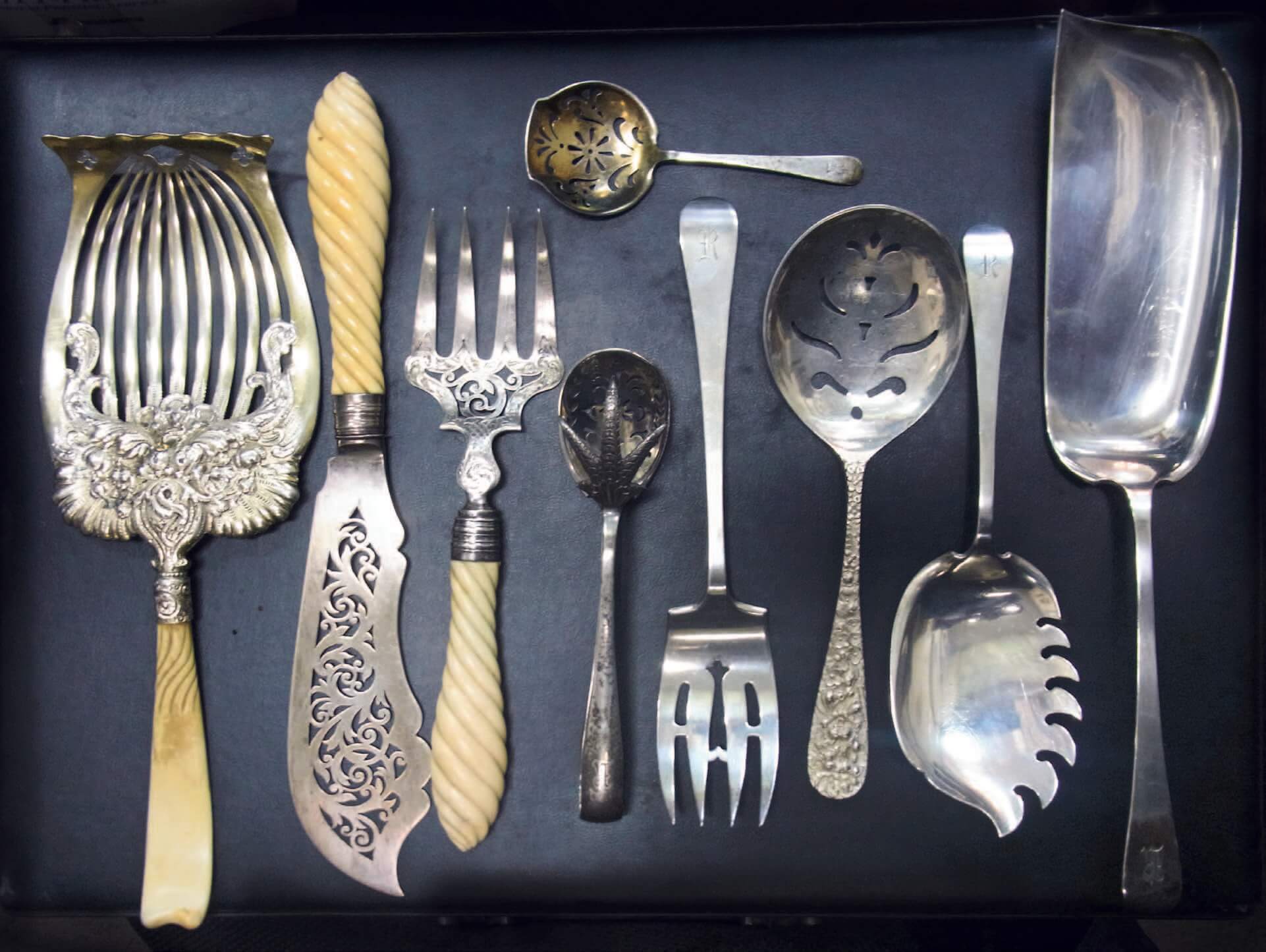Before income taxes, and when prosperous households had help, sterling silver was not only a must but also meticulously designed for a distinct purpose. These pieces required special care and thorough knowledge of their use — as you wouldn’t want to embarrass yourself by serving a food with the wrong utensil.

The wavy piece is a Gorham pasta server. The petite scoop is a bonbon or nut server. The large fancy gilded piece is a Watson asparagus server. It’s been gilded to keep odor down because silver mixed with acid is stinky. The two-piece ivory handled set was made by George Unite in Birmingham, England, during the Civil War era and is for serving fish. (The fork holds down the fish and the knife is used to slide under the flesh.) The giant clawed tongs were used for handling hard-boiled eggs, and were also designed by Gorham.
Giant Silver Monogram Utensils
The Kirk repoussé pierced spoon is a sliced tomato server. The giant long spatula-like piece is a crumber for cleaning the table after a meal. Other pieces we occasionally see are lettuce forks (which look lethal), aspic servers and bone marrow servers. Determining the value of such pieces is complicated and based on whether the piece is monogrammed, as well as its condition, the pattern and the maker.
We have had single, unusual Tiffany serving pieces bring $2,000 each. The pieces here range from $10 for the small bonbon server to $1,000 for the large asparagus server. The bottom line is everything should not be just thrown on a scale; consult an expert for the real value of your items.
This is an archival article formerly written and is for informational purposes only. The valuations in this article have likely changed since it was first written.




